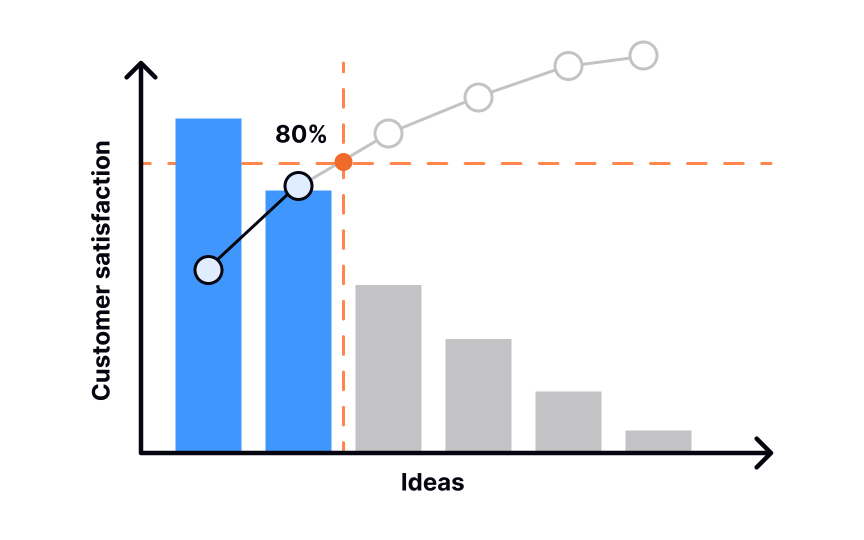Pareto analysis
The Pareto principle, also known as the 80/20 rule, states that 80% of the effects come from 20% of the causes.[1] In the context of service design, 80% of the benefits or problems arise from 20% of the options generated. For example, if a company receives customer complaints about their product, the Pareto principle suggests that 80% of the complaints come from 20% of the product's features. Identifying these critical features can help the company prioritize improvements and allocate resources more efficiently.
To conduct a Pareto analysis, follow these steps:
- Collect data on the options generated and their impact on the service's success. This could include factors like customer satisfaction, cost savings, time savings, or any other relevant metrics.
- Rank the options based on their impact, prioritizing the most impactful options.
- Represent the ranked options in a bar graph, with the tallest bar representing the option with the most significant impact.
- Calculate and represent the cumulative impact of each option in a line graph.
- Identify the vital few options with the most significant impact and prioritize them for implementation.
References
- Prioritize Quantitative Data with the Pareto Principle | Nielsen Norman Group

